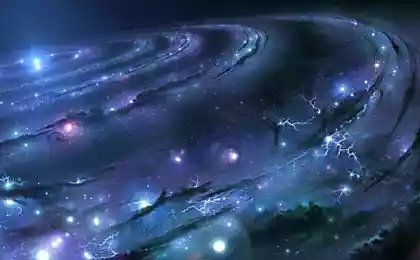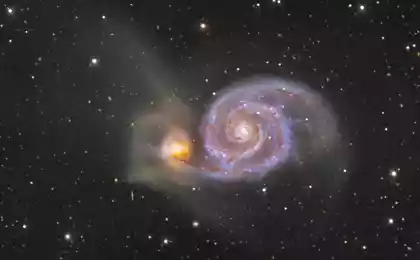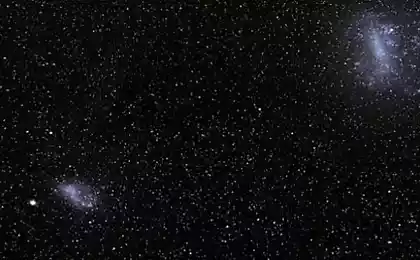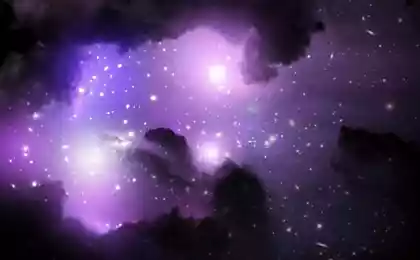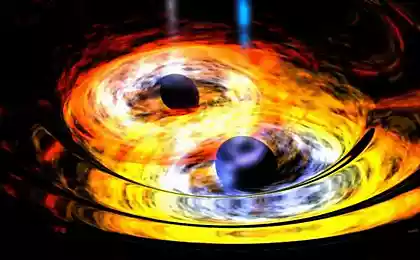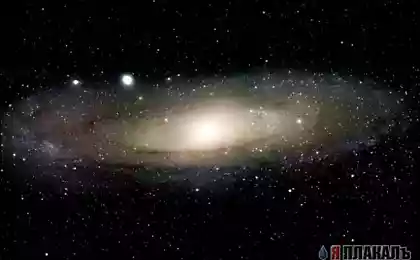844
Featured Galaxy
Hoag's Object
Hoag object is similar to two different galaxies, with its bright yellow band star center and a blue ring star separated from each other in space. But no - this one galaxy, such as the Saturn - a planet with a ring around. The scientific community has not been able to explain how Hoag's Object formed. As a result, they are simply labeled him as the type of ring galaxy. These kinds of galaxies are quite rare, and therefore attract so much attention.
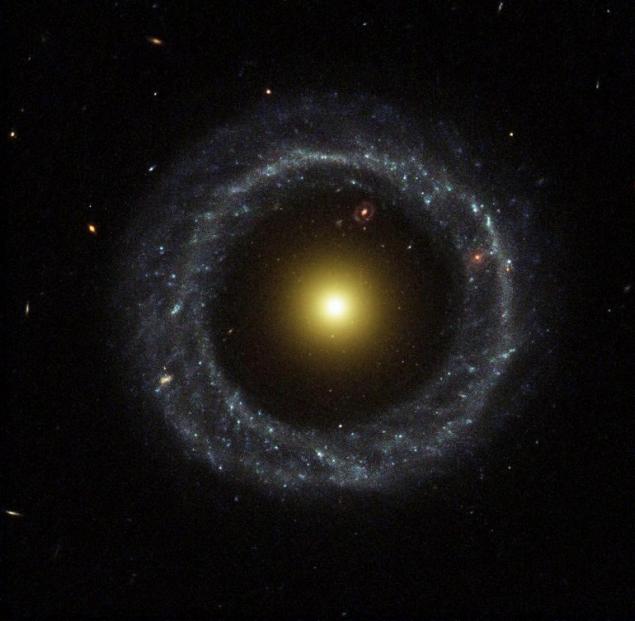
Galaxy Arp 87
Arp 87 - what happens when two galaxies collide with each other in an iron cage, and only one in the end remains. Galactic collisions are common, and sometimes result in the formation of just such galaxies. In the case of Arp 87, almost two galaxies collided with each other a few billion years ago, and gravity pulled a matter between them. The cycle is not finished, and the attraction between them will play a role, as they ultimately merge into one large galaxy. At the moment, they are united by only a thin stream of stars, gas, and small particles.

Galaxy Antenna
This is another pair of galaxies, devouring each other, but a much longer time. The only way to determine that the two galaxies are yellow group of stars from both ends - they used to be the galactic center. Now they are more like a gigantic, amorphous blob gradually moving together to a state of equilibrium. Most of the existing groups of stars in the galactic pair split before the new Galaxy will be fully formed - only the large groups will survive the merger. The most interesting thing that we can learn from observing this process - that the Milky Way will inevitably merge with the nearby Andromeda galaxy, which is moving in our direction. But do not worry, this will not happen for several billion years.
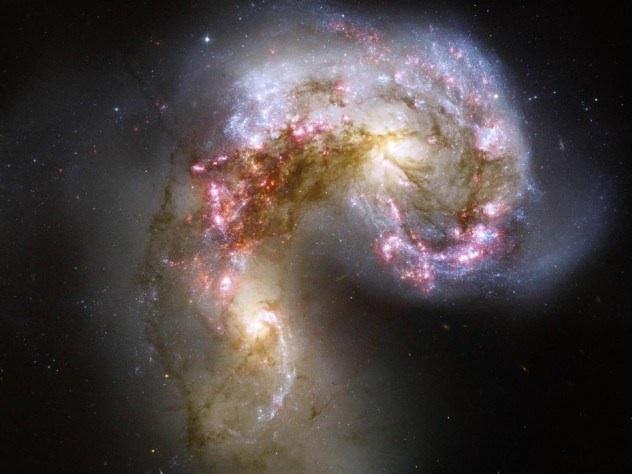
Sombrero Galaxy
Sombrero Galaxy has a striking resemblance with a sombrero hat, which is not surprising. She has a large bulge in the center, which is actually made up of several different groups of stars. Science has long been scratching their heads as they were able to ring so formed. Also, it is very likely that the heart of the Sombrero Galaxy feeds a large black hole.
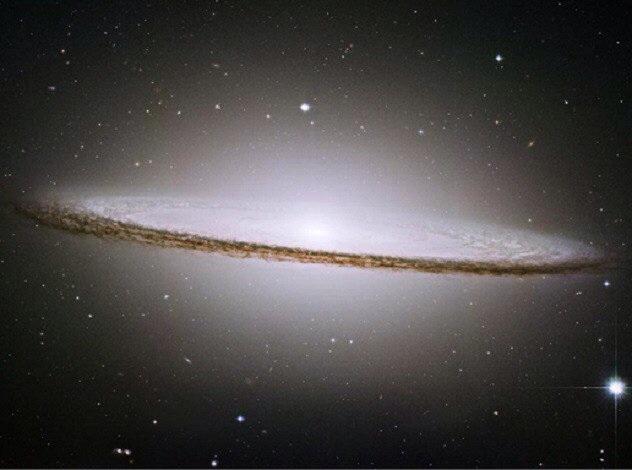
Centaurus A
If you do not scrutinize too closely, it can hardly be seen in Centaurus A is something unusual. But, in fact, Centaurus A - very large by the standards of the galaxy, and most large galaxies are of two types: spiral and elliptical. But Centaurus A - single elliptical galaxy, which has and spiral elements. The theory is that Centaurus - absorbed millions of years ago, a spiral galaxy, but such mergers are not common. Also, there is no answer to the question why spiral structure was not damaged in such a merger.

South spinner, M83
Located in the constellation of Hydra, Southern Pinwheel Galaxy, also known as M83, is one of the brightest galaxies in our night sky. She was discovered about 250 years ago, but I think the gas cloud has not yet been able to investigate closer. Bright colors in this great maelstrom of pink and purple are the most distinctive feature of the galaxy, as well as the frequent explosions of supernovae observed by astronomers. Currently there are eight active supernova observed in M83. Pink - a direct result of the activity of new stars being formed in the system, which produce a huge amount of ultraviolet energy. This energy is absorbed by the surrounding dust and gas, turning pink. South turntable called the prettiest galaxy, as it resembles a giant space flower.
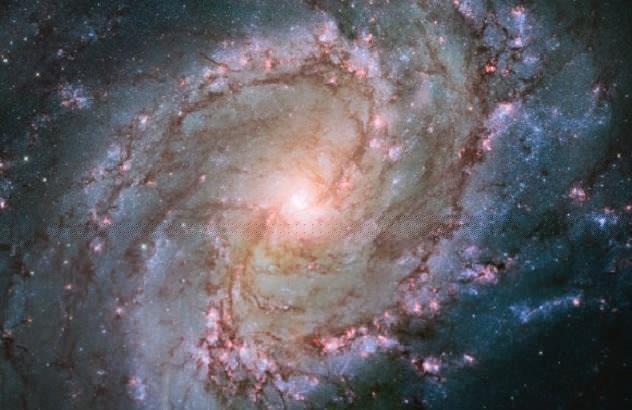
Galaxy NGC 474
NGC 474 is less like a galaxy, and more on one of the countries of bioluminescent fish that live on the ocean floor. Astronomers are not sure what causes the release of such a large amount of energy, but there are two prevailing theories. Firstly, it may be the remains of smaller galaxies, NGC 474 absorbed, or the result of interaction with another galaxy in the process of collision with each other. Because of these bizarre shells able to learn a lot about the collisions of galaxies and to explore their further development.

NGC 660
NGC 660 - a rare type of galaxy is a polar ring galaxy. Are they rare? Found only a dozen of them to date. These galaxies have a ring of stars, dust, debris and other material in the orbit. Where did all this stuff come from? Most likely, it broke away from the galaxy, which took place near a very long time. The ring and the galactic disk interface, and astronomers observed how gravity of dark matter affects the drive to learn more about dark matter itself.

Porpoise
One look at the Galaxy porpoises, aka NGC 2936, allows us to understand the origin of the name. She looks like a dolphin, although some say it is more like a penguin, which protects the egg. In fact, it is a system of two galaxies, "dolphin" - actually part of the NG in 2936, while the "egg" called Arp 142. The part dolphin was once a spiral galaxy similar to the Milky Way, but the huge gravitational forces denser galaxy distorted its shape. "Eye" dolphin - what used to be the core of a spiral galaxy. This galaxy is also located within the constellation Hydra, and for about a billion years, the pair will merge into a single entity.

Black Eye Galaxy
Can the Galaxy look aggressively? To find the answer to this question, look at the black eyes. Galaxy (also known as M64, the galaxy, or Sleeping Beauty) resembles a creature with red eyes. Red means an abundance of hydrogen released during the formation of stars. Stars and gas reddish galaxy rotate in one direction, while a great cloud of dust and gas surrounding it is rotated in the other direction. It is likely that this is the result of two galaxies merging together.
Posted in [mergetime] 1395370584 [/ mergetime]
All
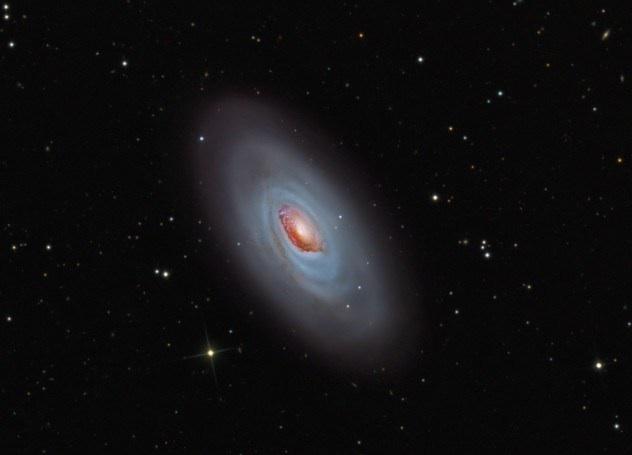
Source:
Hoag object is similar to two different galaxies, with its bright yellow band star center and a blue ring star separated from each other in space. But no - this one galaxy, such as the Saturn - a planet with a ring around. The scientific community has not been able to explain how Hoag's Object formed. As a result, they are simply labeled him as the type of ring galaxy. These kinds of galaxies are quite rare, and therefore attract so much attention.

Galaxy Arp 87
Arp 87 - what happens when two galaxies collide with each other in an iron cage, and only one in the end remains. Galactic collisions are common, and sometimes result in the formation of just such galaxies. In the case of Arp 87, almost two galaxies collided with each other a few billion years ago, and gravity pulled a matter between them. The cycle is not finished, and the attraction between them will play a role, as they ultimately merge into one large galaxy. At the moment, they are united by only a thin stream of stars, gas, and small particles.

Galaxy Antenna
This is another pair of galaxies, devouring each other, but a much longer time. The only way to determine that the two galaxies are yellow group of stars from both ends - they used to be the galactic center. Now they are more like a gigantic, amorphous blob gradually moving together to a state of equilibrium. Most of the existing groups of stars in the galactic pair split before the new Galaxy will be fully formed - only the large groups will survive the merger. The most interesting thing that we can learn from observing this process - that the Milky Way will inevitably merge with the nearby Andromeda galaxy, which is moving in our direction. But do not worry, this will not happen for several billion years.

Sombrero Galaxy
Sombrero Galaxy has a striking resemblance with a sombrero hat, which is not surprising. She has a large bulge in the center, which is actually made up of several different groups of stars. Science has long been scratching their heads as they were able to ring so formed. Also, it is very likely that the heart of the Sombrero Galaxy feeds a large black hole.

Centaurus A
If you do not scrutinize too closely, it can hardly be seen in Centaurus A is something unusual. But, in fact, Centaurus A - very large by the standards of the galaxy, and most large galaxies are of two types: spiral and elliptical. But Centaurus A - single elliptical galaxy, which has and spiral elements. The theory is that Centaurus - absorbed millions of years ago, a spiral galaxy, but such mergers are not common. Also, there is no answer to the question why spiral structure was not damaged in such a merger.

South spinner, M83
Located in the constellation of Hydra, Southern Pinwheel Galaxy, also known as M83, is one of the brightest galaxies in our night sky. She was discovered about 250 years ago, but I think the gas cloud has not yet been able to investigate closer. Bright colors in this great maelstrom of pink and purple are the most distinctive feature of the galaxy, as well as the frequent explosions of supernovae observed by astronomers. Currently there are eight active supernova observed in M83. Pink - a direct result of the activity of new stars being formed in the system, which produce a huge amount of ultraviolet energy. This energy is absorbed by the surrounding dust and gas, turning pink. South turntable called the prettiest galaxy, as it resembles a giant space flower.

Galaxy NGC 474
NGC 474 is less like a galaxy, and more on one of the countries of bioluminescent fish that live on the ocean floor. Astronomers are not sure what causes the release of such a large amount of energy, but there are two prevailing theories. Firstly, it may be the remains of smaller galaxies, NGC 474 absorbed, or the result of interaction with another galaxy in the process of collision with each other. Because of these bizarre shells able to learn a lot about the collisions of galaxies and to explore their further development.

NGC 660
NGC 660 - a rare type of galaxy is a polar ring galaxy. Are they rare? Found only a dozen of them to date. These galaxies have a ring of stars, dust, debris and other material in the orbit. Where did all this stuff come from? Most likely, it broke away from the galaxy, which took place near a very long time. The ring and the galactic disk interface, and astronomers observed how gravity of dark matter affects the drive to learn more about dark matter itself.

Porpoise
One look at the Galaxy porpoises, aka NGC 2936, allows us to understand the origin of the name. She looks like a dolphin, although some say it is more like a penguin, which protects the egg. In fact, it is a system of two galaxies, "dolphin" - actually part of the NG in 2936, while the "egg" called Arp 142. The part dolphin was once a spiral galaxy similar to the Milky Way, but the huge gravitational forces denser galaxy distorted its shape. "Eye" dolphin - what used to be the core of a spiral galaxy. This galaxy is also located within the constellation Hydra, and for about a billion years, the pair will merge into a single entity.

Black Eye Galaxy
Can the Galaxy look aggressively? To find the answer to this question, look at the black eyes. Galaxy (also known as M64, the galaxy, or Sleeping Beauty) resembles a creature with red eyes. Red means an abundance of hydrogen released during the formation of stars. Stars and gas reddish galaxy rotate in one direction, while a great cloud of dust and gas surrounding it is rotated in the other direction. It is likely that this is the result of two galaxies merging together.
Posted in [mergetime] 1395370584 [/ mergetime]
All

Source:
